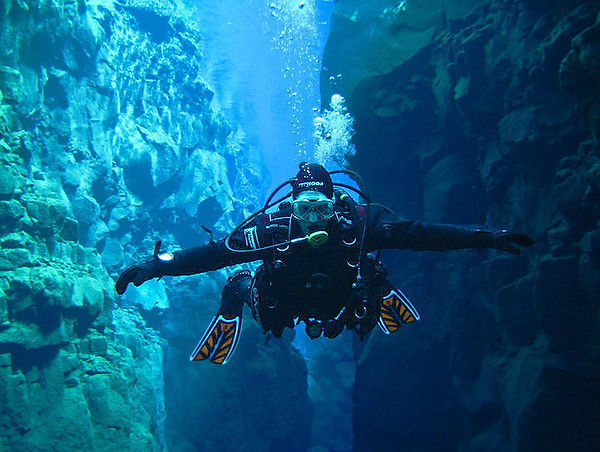
OPTIMISED BRAINS
A product of the environment
Behavioural responses - what we pay attention to, what goals are important, what decisions we make - are determined by how the brain organises functionally, dependent on the environment in which we are situated.
A simple model can be used to help think about the key variables that are involved in influencing these behaviours. It also forms a basis for thinking about which factors can be influenced in order to re-programme responses. Effectively to take more control over mindset, behaviour and emotions.
Three components are key in this: Environment, Physiology and Psychology (or in plainer terms: surroundings, body and mind). These components interact with each other in a complex system and the interactions work both ways.

Everything we do is driven by the environment in which we find ourselves (our surroundings).
Whether this is in a safe, climate controlled home, on a precipitous mountain slope at high altitude, or in the ominous depths underwater, the environment will affect how we react both physiologically (in body) and psychologically (in mind). Likewise, psychological state is influenced by physiological factors (whether we are too hot or cold, oxygen deprived or fatigued).
Physiological reserves and arousal levels will determine how much energy we have available to prompt acting upon and within the environment. Psychological factors including motivational state and how we 'decide' to perceive the situation will also prompt how we address the environment, reframing what it 'means' and how we might take steps to adapt to it or it to us to establish control.
With this model we can begin to address the different factors, to establish which are influencing our current 'state' the most, and how we might mitigate that to redress the balance as it were. This is a useful approach to help unpack what we can do next to facilitate optimal performance and enhanced wellbeing.
In plain summary, our surroundings both subtly and not-so-subtly influence how we react in body and mind to drive our behaviour. If we can take stock of this and become more in control of these reactions, we can perform better, feel more emotionally in charge, and have more energy. Which in turn means we are better able to adapt to circumstance, be clearer-headed, and more resilient.

Brain Networks
Cognitive neuroscience methods and insights provide a window into how the different components of the brain interconnect. This is known as Functional Connectivity (FC), and can be observed using neuroimaging techniques as well as other indirect means for assessing how different networks of brain regions talk to each other and generate our behaviours.
The diagram below illustrates three principal brain networks that operate together and in opposition depending on circumstance and mental state. Broadly speaking, the Default Mode Network (DMN) dominates when one is focused inwards, engaged in thought patterns that rely on memory, day dreaming ('Mind Wandering'). The Central Executive Network (CEN) is activated when one is focused more externally and on tasks that require concentration on goals, particularly relying on information from the environment. The Salience Network (SN) acts as a 'trigger' switching between the DMN and CEN. This responds to important information be that in the environment or in relation to physiological state signals within the body, including emotional feelings. Again broadly speaking, when one is focused on getting a task done, the CEN should hold sway and the DMN should be 'turned off' as it were (more or less).

These networks, and the way they interconnect and 'switch' can determine how efficient and optimal the behavioural response is in a given circumstance. They govern how attention is invested in purposeful activities, and ultimately successful performance. (A subsidiary system - the Locus Coeruleus-Norepinephrine system (LC-NE) - also has bearing on this with respect to governing arousal - a key aspect in stress response that provides the energy impetus for action - there being a 'sweet spot' in the arousal/performance curve that optimises behaviour: not too little, not too much.)
Typically, when we perform sub-optimally, there will be an element of conflict between the CEN and DMN, whereby functional connectivity remains within the DMN when one is attempting to engage in a task. This causes distraction as attention is fluctuating.
An overactive DMN (functional connectivity does not significantly diminish) can be problematic and have disruptive effect on an individual's wellbeing:
Mishaps and errors of performance with potentially grave consequences

There is no room for distraction from inner thoughts, negative self-talk, or mind-wandering when circumstance demands focus on the task at hand and information present in the external environment.

By focusing externally and committing to act rather than think the CEN / SN engage (and DMN disengage) to ensure performance is not disrupted.
Mental health impact due to failure to disconnect with patterns of (negative) thinking

Getting stuck in a loop of negative thinking, or becoming overwhelmed with what the future might hold in store can freeze one in one's tracks.

Resorting to mindfulness, restoring physiological balance through breathing, and looking outwards can diminish the overactivity of the DMN, bring one's attention away from internal ruminations and re-establish perspective and a sense of control and purpose.
Using this model of brain networks in 'optimal performance' can provide guidelines for addressing the mental aspects that determine how we approach life, to move from 'surviving' to 'thriving'. Poor connectivity results in negative thinking and potential mental health concerns. Good connectivity is empowering and enabling, towards successful goals accomplishment and mental and emotional resilience.
And a further key enabler in this rests in how we address our place in the environment. And different environments. Particularly environments that provide stimulation and challenge.
Environments, particularly those found in extreme places, stress the physiological system to provoke an adaptive homeostatic response. In order to build muscle one needs pressure, resistance to push back against. Likewise in terms of physiological stress and resultant adaptation and growth. Physiological 'growth' in turn requires psychological accommodation. This effectively allows us to build 'mental fitness'.

CognitvExplorer research focuses on this approach to understanding brain function as a consequence of environmental context, and applications with respect to enhancing 'mental fitness' in a wide variety of situations.
This is promoted throughout our services to help others embrace the insights and techniques that can foster improvements at personal and organisational levels.
-
Talks and workshops emphasise WHY adventure and environmental context can enhance performance, mental fitness and wellbeing. This involves using examples from adventure and extreme sports coupled with graspable concepts from scientific research about how the brain works at it's best.
-
Wild coaching in the outdoors focuses on putting this into practice, actively exploring the environment. Supplementary integration of ideas and concepts introduced along the way give the experience lasting impact as concepts and techniques can be considered in wider life moving forwards. This can include an element of facing some fears, such as exposure to heights, using a safe method (being roped up) to overcome the challenge of being scared!
The Psychological Barometer is a tool that has been developed from this research, and which seeks to people gain a measure of the attributes which contribute to a healthy and 'mentally fit' mindset. You can try this out here.



